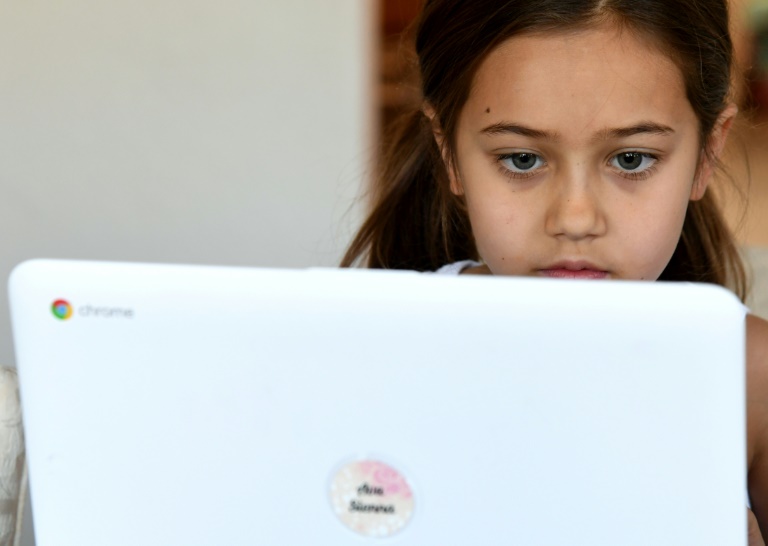Thousands of American schools are ringing in the New Year with a return to remote learning as the Omicron wave hits staff and students, with some parents expressing worry for their children’s education and mental wellbeing.
The closures — which for now comprise around four percent of schools nationwide — are focused in the country’s northeast and midwest, as districts contend with teachers and students who have fallen ill with Covid and try to curb transmission.
Teachers’ unions have also adopted a more Covid-cautious approach since the start of the pandemic, at times pitting them against local authorities.
In Chicago, the country’s third-biggest city, around 340,000 public school students have been forced to remain home amid a standoff between the mayor and the Chicago Teachers Union, which is demanding more robust testing and increased student vaccination.
Experts, and families themselves, are divided on the wisdom of virtual education when effective vaccines are widely available to everyone aged five and up, protecting most people who receive them from severe outcomes.
Steven Bosak, an innovation consultant in the US capital Washington, told AFP his two school-aged children — who attend the city’s biggest public school — had lagged educationally and socially when they were forced to learn remotely.
Last year, his 17-year-old “felt depressed, he felt socially isolated. He’s a very social kid and he missed his friends,” said Bosak, adding it was not a situation he wanted to see again.
– Experts mixed –
“I think it has to be viewed as a failure that we’re having school closures in 2022, two years into this pandemic,” said Amesh Adalja, an infectious disease doctor who researches pandemic policy at the Center for Health Security at Johns Hopkins University.
Even prior to vaccines, research showed schools were not major centers of spread, and could be kept safe with social distancing, masking and ventilation, he added.
On the other hand, the pediatric infection rate under the Omicron variant is unprecedented — and while the vast majority of cases are mild, the sheer number of cases means hospitalizations are also at an all-time high.
“I don’t think that anybody advocating for this sort of across-the-board mass closures, I think that it’s going to be a question of targeted closures during peak surges,” Dan Summers, a private practice pediatrician in Boston, told AFP.
While children are at lower risk, there is a danger of them transmitting the virus back to vulnerable people, at a time when the country’s intensive care units are already overextended, said Summers.
“We would only be thinking of this or recommending it if those downsides have to be accepted,” the father of four added.
– Union pushback –
According to figures compiled by the research group Burbio, more than 4,500 schools either shifted to remote learning or closed for at least a day this week, by far the highest level of disruption over many months.
Still, a full 96 percent of schools are open, White House Covid task force coordinator Jeff Zients told reporters this week, adding it remained a clear priority of President Joe Biden to return to in-person learning.
That has at times placed the president at odds with some of his own Democratic Party supporters, who are far more likely to be Covid-cautious than Republicans.
The Chicago Teachers Union’s 25,000 members have defied city authorities and refused to return to classrooms until their demands are met or cases subside.
“The absolute wrong thing to do right now is to abandon the science and the data that tells us unequivocally that our schools in-person are the best place for our students to be,” Mayor Lori Lightfoot told CNN Thursday as the impasse continued.
Not all parents think it’s vital to re-open schools immediately, however.
Web designer Anne-Claire Thomassin, who lives in the city of Rockville, Maryland, said her 10-year-old daughter Anna’s private school went remote this week after testing students and teachers alike, and finding a high positivity rate.
The school has tested weekly since September, and “I trust them on the decisions they make,” she said, though she hopes the school reopens soon.
“I have to admit that my daughter’s not super happy with the virtual school because it’s longer and slower,” she said, and “throws her back to her feelings of last year.”









